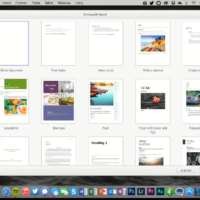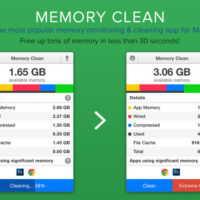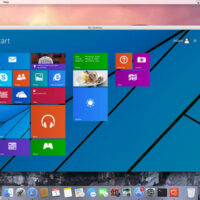Apple in mid-November announced that it will adopt Rich Communication Services (RCS) in 2024, replacing the SMS and MMS messaging standards. Apple’s news came as a shock because Google had been aggressively pushing Apple to implement RCS for multiple years, but Apple hadn’t budged.

This guide explains everything that you need to know about RCS, including how it works, how you’ll use it on Apple devices, why Apple decided to adopt it now, and the benefits that you can expect to see when support is added.
RCS Explained
Rich Communication Services, or RCS, is a communication protocol developed by the GSM Association and championed by Google. As a communication protocol, RCS is used by smartphone manufacturers and carriers to deliver text-based messages, images, and videos between devices. It’s basically what will power the text messages that you send to people with your iPhone and other Apple devices.
RCS is a replacement for SMS (Short Messaging Service) and MMS (Multimedia Messaging Service), both of which are used for data sharing over cellular networks. RCS combines the features of SMS and MMS, and adds additional functionality. It will be what allows you to send texts to people who don’t have iPhones for iMessage.
RCS Features
There are a number of benefits to RCS compared to the prior MMS and SMS features. Much of the improvements will be seen in iPhone to Android chats because for conversations between Apple device owners, iMessage will continue to be the default.
- Support for higher resolution photos and videos.
- Support for larger file sizes and file sharing.
- Audio messages.
- Cross-platform emoji reactions.
- Real-time typing indicators.
- Read receipts.
- Ability to send messages over cellular or Wi-Fi (SMS is cellular only). There is no cost to send an RCS message over Wi-Fi.
- Improved group chats.
- Better security. Google’s version of RCS has end-to-end encryption, which Apple does not intend to use. Apple will instead work with the GSMA to develop a more secure form of encryption that is baked natively into RCS.
RCS vs SMS/MMS
SMS or Short Messaging Service is supported by almost all mobile phones, and it is designed to allow you to send text messages from device to device. It is accompanied by the Mobile Messaging Service extension that supports photos, videos, and longer text messages. Both of these standards have been around for more than two decades and have fallen behind more modern chat apps in terms of features.
RCS is essentially a modernized version of SMS/MMS that carriers and smart phone manufacturers started adopting right around a decade ago, but it has taken time for it to be supported and not all companies have added support (such as Apple), so the more universal (and more limited) SMS/MMS standards have stuck around too.
Perhaps one of the biggest changes is the way that SMS/MMS and RCS work. SMS and MMS are carrier supported and require a cellular connection to function. RCS is supported by carriers, but RCS messages can be sent over a cellular or Wi-Fi connection, similar to iMessages, so there’s no specific cellular connection requirement.
RCS is in fact much more like WhatsApp, iMessage, Messenger, and similar chat apps, but baked into a smartphone’s default text messaging app. It supports features that SMS/MMS do not, like typing indicators, high-resolution images, file transfers, and video calls.
RCS and iMessage
RCS works alongside iMessage, and it does not replace iMessage. For iPhone to iPhone conversations and texts on any Apple device to another Apple device, iMessage will be the default.
After RCS support is implemented, if you turn off iMessage on your iPhone, it will likely default to RCS on supported devices as that will be the text messaging standard for non-iMessage communications.
iMessage will continue to function exactly as it does now with no change for communications between Apple device users.
What RCS Means for iPhone Users
If you have friends or family members that have an Android device, you’ll see an improvement in some of the frustrations that come with cross-platform messaging.
Group texts between Android and iPhone users will be less buggy, and there won’t be the same limitations on photo and video size that can cause media not to send. The tapback reactions that you use on an iPhone will have an emoji reaction equivalent on Android, so tapbacks won’t be quite as confusing to your Android using friends.
Read receipts and typing indicators will be available for iPhone to Android communications and won’t just be limited to iPhone to iPhone iMessages when RCS rolls out.
In general, iPhone owners and those with other Apple devices don’t need to think about RCS or worry about it. It’s a change that’s going to happen in the background with no user interaction required. Communication is not changing between iPhones, and between iPhone and Android users, messaging will be the same, but improved in terms of reliability.
RCS and Android
Text conversations with Android users are the primary way iPhone users will experience RCS when it comes out. RCS will only be available when all participants in the conversation have a device and a carrier that support it, but that should encompass most Android users in the United States.
Android devices have had RCS for some time as Google and Samsung have supported it for several years and were pushing Apple to adopt it.
Right now, sharing photos and videos with Android users can be tricky for an iPhone user, and sometimes photos and videos are too large or won’t deliver. There are also often issues with group conversations between Android and iPhone users, both in terms of supported features and stability.
Talking to an Android user should be less of a hassle than it is now when RCS rolls out because features like emoji reactions will be supported, there will be typing indicators, and files and images should not fail to send.
Green Bubbles vs. Blue Bubbles
While it will be less frustrating to communicate with “green bubble” people on an Apple device, chat bubble colors are not changing.
iMessage conversations will continue to be denoted with blue chat bubbles, and RCS messages will continue to be green, the same as SMS/MMS messages are now. Note that SMS and MMS aren’t going away. They’ll continue to be available on networks that don’t support RCS and in situations where RCS is unavailable.
RCS requires all of the devices participating in a conversation to have support for the feature, and the network needs to support it too. So if you happen to message someone who uses a carrier that doesn’t support RCS or who has RCS turned off, it will fall back to SMS.
A Note on Encryption
Google’s implementation of RCS for Google Messages supports end-to-end encryption on Android devices, but it is worth noting that Apple is adopting the RCS Universal Profile created by the GSM Association and not a version of RCS modified by Google. RCS messages will be more secure, but won’t be end-to-end encrypted as iMessage conversations are, at least not until updates are made to the standard.
Apple says that it plans to work with the GSM Association on further improvements for RCS, including better encryption.
RCS Worldwide
Google, Samsung, and all U.S. carriers have adopted RCS, but in some countries, local carriers will need to add support before RCS between iPhones and other devices will be functional.
Why Is Apple Supporting RCS Now?
Google has been practically begging Apple to implement support for RCS since 2022, launching a website, starting a social media campaign, filming ads, and setting up billboards all with the aim of convincing Apple to support the messaging standard.
In September 2022, Tim Cook said that adopting RCS was not a priority for Apple. “I don’t hear our users asking that we put a lot of energy into that at this point,” he said. So what’s changed? It isn’t entirely clear, but regulatory issues have likely played a factor.
Apple is facing scrutiny over App Store, iMessage, and other proprietary technologies in several countries around the world, so by adopting a universal messaging standard, Apple is showing a willingness to support device interoperability.
In the European Union, legislators are developing laws that would require Apple to make changes to iMessage to make it available on other platforms so that iMessage users aren’t locked in to Apple devices. With RCS, iMessage will have fewer benefits that are unavailable cross-platform, and closer feature parity will be available on iPhone and Android devices.
When Will Apple Adopt RCS?
Apple said that it plans to adopt RCS “later next year,” which means at some point in 2024. The “later” wording suggests that it could come more toward the end of the year, perhaps in iOS 18, but that is not confirmed as of yet.
This article, "Breaking Down Apple's 2024 Shift to Rich Communication Services" first appeared on MacRumors.com
Discuss this article in our forums
Remember to like our Facebook and our twitter @macheatdotcom for more games, wallpapers & apps.












